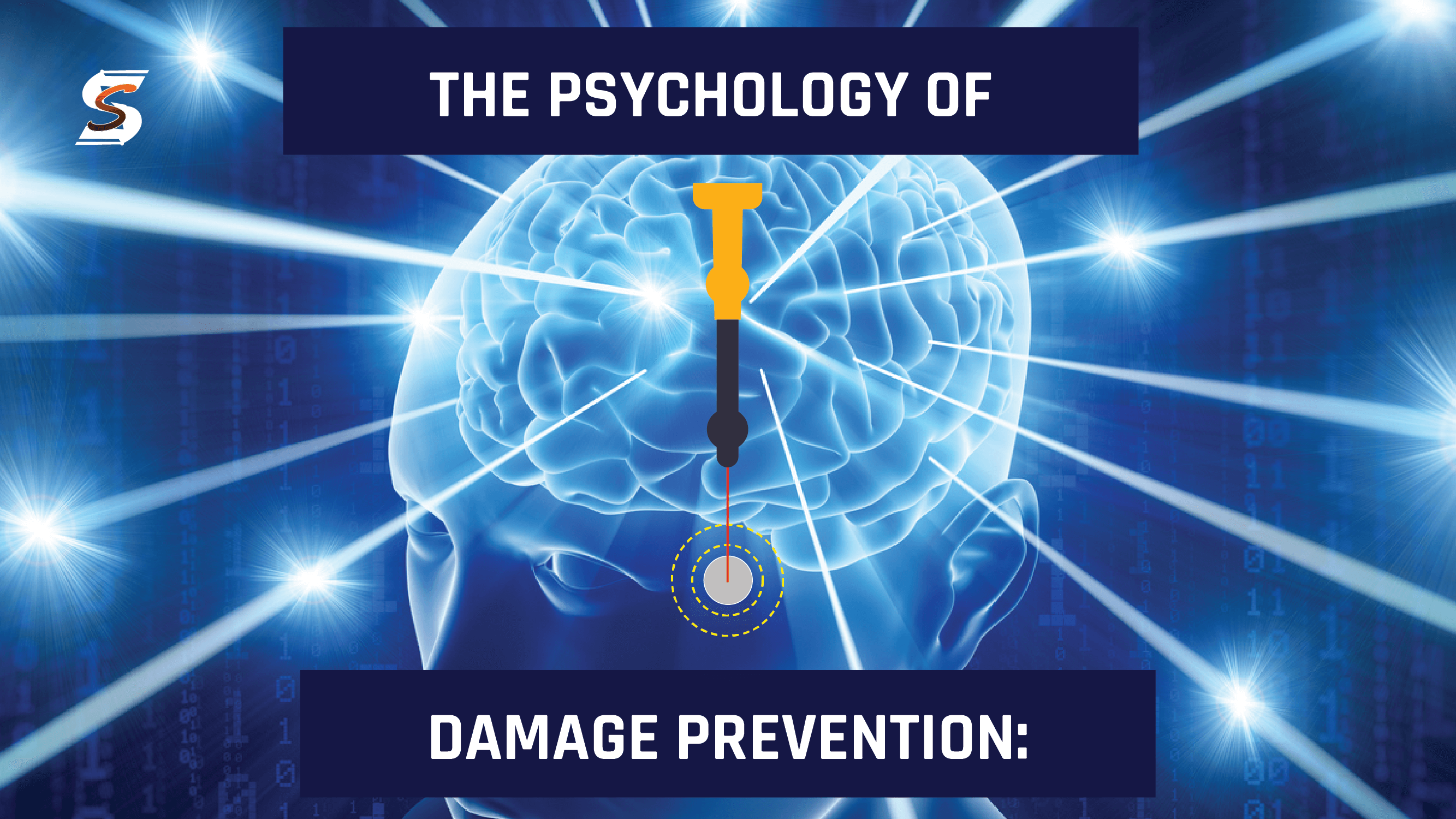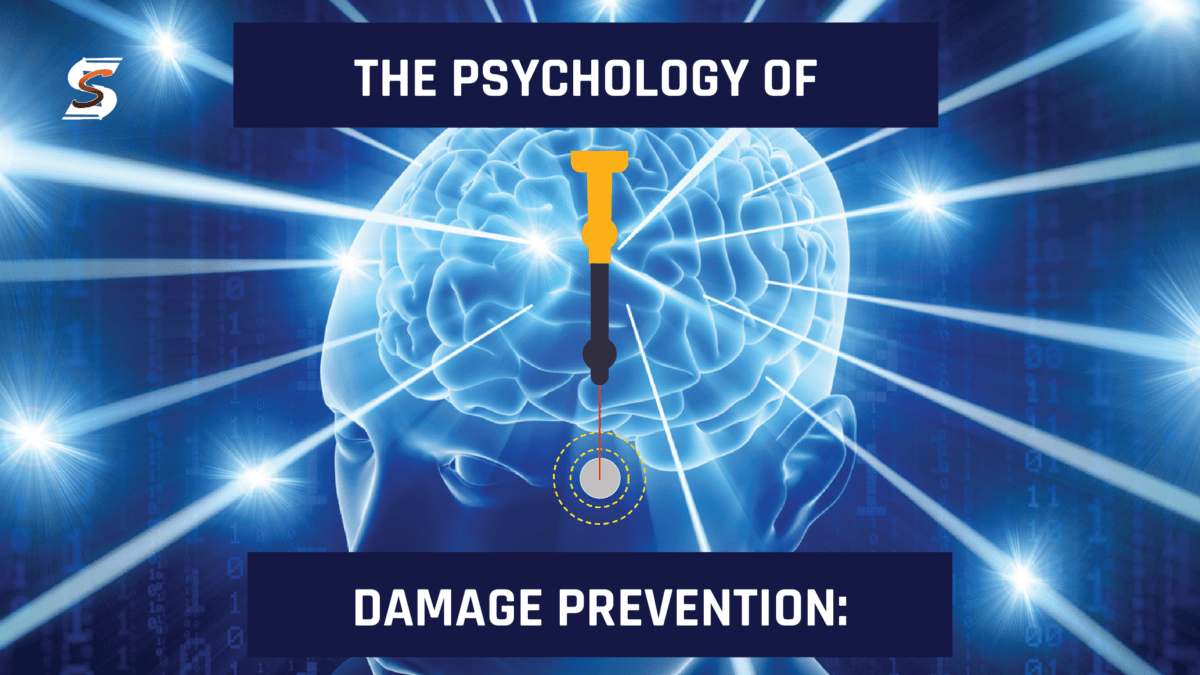
The locating and excavation industries like any industries are only as effective as the people which are in them. While technological advancements have improved performance and safety measures, there's another vital factor that often goes unnoticed: the psychology of the workers. In this article, I'll focus on behavioral science and its potential role in reducing accidents and protecting critical infrastructure during excavation.
Understanding the Human Element
Damage prevention isn't just about regulations, technology and equipment; it's also about human behavior. I'm not an expert in this field but I'm speaking from experience and the observations I've made over the last 10 years in the industry. Understanding the psychological aspects of worker performance and safety is paramount. Here are a few of the most common issues I see:
- Risk Perception: Excavators' perceptions of risk can significantly influence their behavior. Studies show that individuals often underestimate risks when they become too familiar with their tasks. They may take shortcuts or overlook safety measures. Behavioral science can help identify these psychological biases and develop strategies to counteract them. This is one of the reasons ticket management systems now include risk analysis. NOT EVERY LOCATE IS EQUAL and so a risk taking excavator may mess around and find out at the wrong time! Having risk associated on the ticket will help the locator and excavator make sure to take precaution. Jemmie Wangrecently said on the Barstool Sessions with Mike Parilac: “If everything is dangerous, then nothing is dangerous,” and he was correct. Having a hierarchy of risk helps to mitigate this.
- Complacency: Over time, excavators might become complacent about safety procedures. Behavioral interventions can address this issue by creating an environment that promotes constant vigilance and awareness. One intervention we’ve made with Utilocate is to place the local 811 dig law right into the locate package so that excavators know and are reminded of the law. Another strategy to combat complacency with locators is to make compulsory completion questions at the end of a locate like, “Did you locate the entire dig site?” Simple interventions can have a big effect.
- Peer Pressure: Like in many workplaces, peer pressure can affect safety decisions. Excavators might be inclined to imitate their colleagues, even if it means compromising safety. Behavioral science can design interventions to change these dynamics, making safe choices the social norm. I’ve seen this at lots of different companies; where the culture isn’t safety oriented, it permeates throughout the company and affects everything. That’s why damage prevention works best when the company actually cares. So you can actually use peer pressure for good and influence other locators or excavators to work safely. If you’re the only one not working safe you’ll stick out. That’s why it’s good to track locator metrics within your TMS and be able to leverage that data so that underperformers get rooted out.
Behavioral Interventions
Behavioral science offers several strategies to enhance damage prevention and safety:
- Positive Reinforcement: Encouraging safe behavior through positive reinforcement, such as rewards or recognition, can motivate excavators to follow safety protocols consistently. This can be done in our software too, by confirming and letting the excavator know they’re on target and are digging safely. In addition the opposite holds true and issuing a warning can help the excavator avoid hitting a line. Just look at AMI’s RodRadar.
- Education and Training: Psychologically informed training programs can improve awareness of potential risks and strategies to mitigate them. These programs emphasize decision-making processes under various conditions. Mike Parilac just launched the Certified Locator program at The Utility Expo in September and while it’s not easy, it is an in depth program which helps train locators how to think.
- Cognitive Behavioral Techniques: Excavators and locators can be trained to recognize and address cognitive biases that lead to unsafe actions, improving their decision-making in high-pressure situations. But I'd recommend having backups in your software like "Completions" checks to make sure they've worn their PPE etc. That way you're training them to work safely and reinforcing the behavior.
Case Study
Several industries have successfully employed behavioral science in their safety practices. For instance, the aviation industry introduced Crew Resource Management, which focuses on improving communication, leadership, and decision-making in high-stress environments. Applying Crew Resource Management principles to excavation teams can enhance collaboration and reduce errors.
Easiest Implementation
The easiest way to implement many of these behavioral interventions is with technology. As long as you have a clear goal you can use the metrics and data from your tech stack to help you meet them. Here’s a couple of examples:
Problem: Lack of Communication
Solution: Force Communication using your ticket management system. Whether it’s through a better deliverable, SMS notifications, emails, automated phone calls; you have to do whatever it takes to close the gap between locator and excavator. You can’t just expect the excavator to know or to find information you have to give it to them.
Problem: Lazy Locators
Solution: Automated Routing. Automated routing will assign the best route and give the locator a target for the day. It removes the excuses they may have for wasting time in traffic or for being pulled from one side of the county to another.
Conclusion
The excavation industry has made significant progress in safety measures, but understanding the psychology of excavation safety is the next frontier. Behavioral science offers valuable insights into risk perception, decision-making, and social dynamics that affect safety. By addressing these psychological aspects, excavation professionals can create a culture of safety that reduces accidents and protects vital infrastructure. When it comes to excavation, the psychology of safety may be the key to unearthing a safer and more efficient industry.
Share this Post












